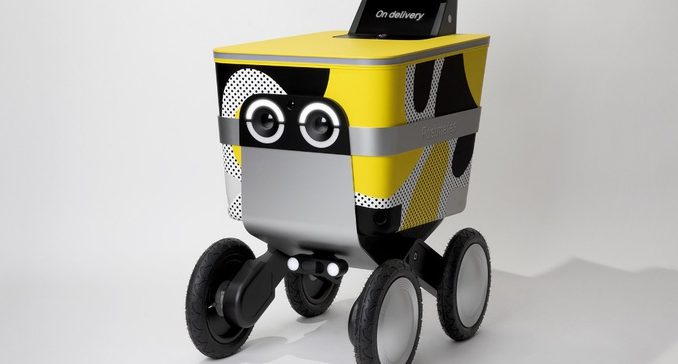
By Alisha Godberg - 8.14.2019
Robotic pedestrians may soon be sharing the sidewalks of San Francisco with people running for buses and walking their dogs. That’s because the delivery service Postmates would appear to be on track to secure a first-of-it-kind city permit to trial a new breed of automated restaurant delivery robot, aptly dubbed Serve.
Postmates unveiled its specialized robot last December, touting it as “the first robotic delivery device created from the ground up by an on-demand delivery service.” Postmates indicated at the time that the intentions was to augment its human couriers, not replace them. In any case, that doesn’t seem likely to happen any time soon, for multiple reasons.
Launched in 2011, Postmates pioneered the on-demand delivery movement in the US by offering delivery from restaurants and stores previously only available offline. The company now operates in 2,940 US cities, as well as Mexico, and provides access to over 250,000 merchants. The company secured $100 million in funding earlier this year and is expected to announce that it will be going public before the end of the year.
The robot, which relies on a laser-based LIDAR system (not unlike the ones in self-driving cars) to navigate its surroundings. It can carry loads of up to 50 pounds, which is a lot of food, and travel about 30 miles on a single battery charge.
Even if Postmates get the green light, however, the fleet of robots will not have the freedom to roam wherever they please. Strict geographic restrictions will be in place by order of city officials at The San Francisco Public Works during the testing period. The city is keeping a close eye on this experiment.
Restrictions reportedly include the following:
“Permits are valid for no longer than 180 days. The Public Works Director may grant up to two 90-day extensions. Permits authorize the testing of up to three autonomous delivery devices per permittee. No more than a total of nine autonomous delivery devices may be permitted at any time. Testing shall be within zoning district designated as Production, Design and Repair (“PDR”). Testing shall not take place within a Vision Zero San Francisco high-injury corridor. A human operator shall remain within 30 feet of the Autonomous Delivery Device for the entire duration of testing. The rules about PDR zones in particular segregate robots to only a few neighborhoods, mostly concentrated around SoMa, Bayview, and India Basin.”
The president of the city’s Board of Supervisors sought to completely ban the robots, which are already currently being tested in other parts of California, including Berkeley, Redwood City and Sacramento. Other towns, including Phoenix and Houston, are also allowing limited testing.
Eventually, San Francisco gave in, modifying the legislation that was passed two years earlier to allow for testing, which for now will not include actual food delivery service. Instead, the robots will be walking the city streets empty-handed, just to make sure they don’t bump into people or objects in a way that could cause damage or major incidents.
Turn signals warning pedestrians of their intentions should help avoid accidents. Humanoid facial features should also help the robot ingratiate itself with its fellow pedestrians. All goes well, the robots could be in actual service next year.

